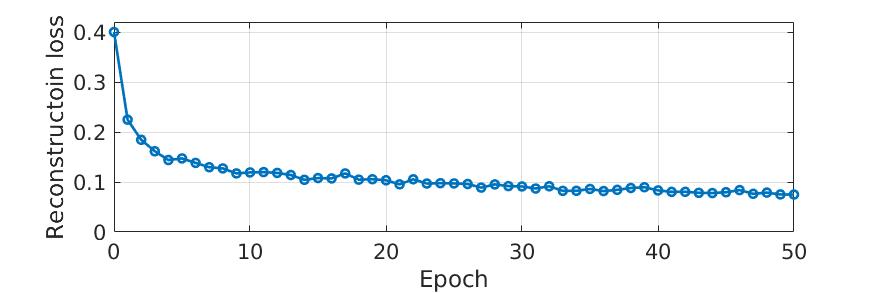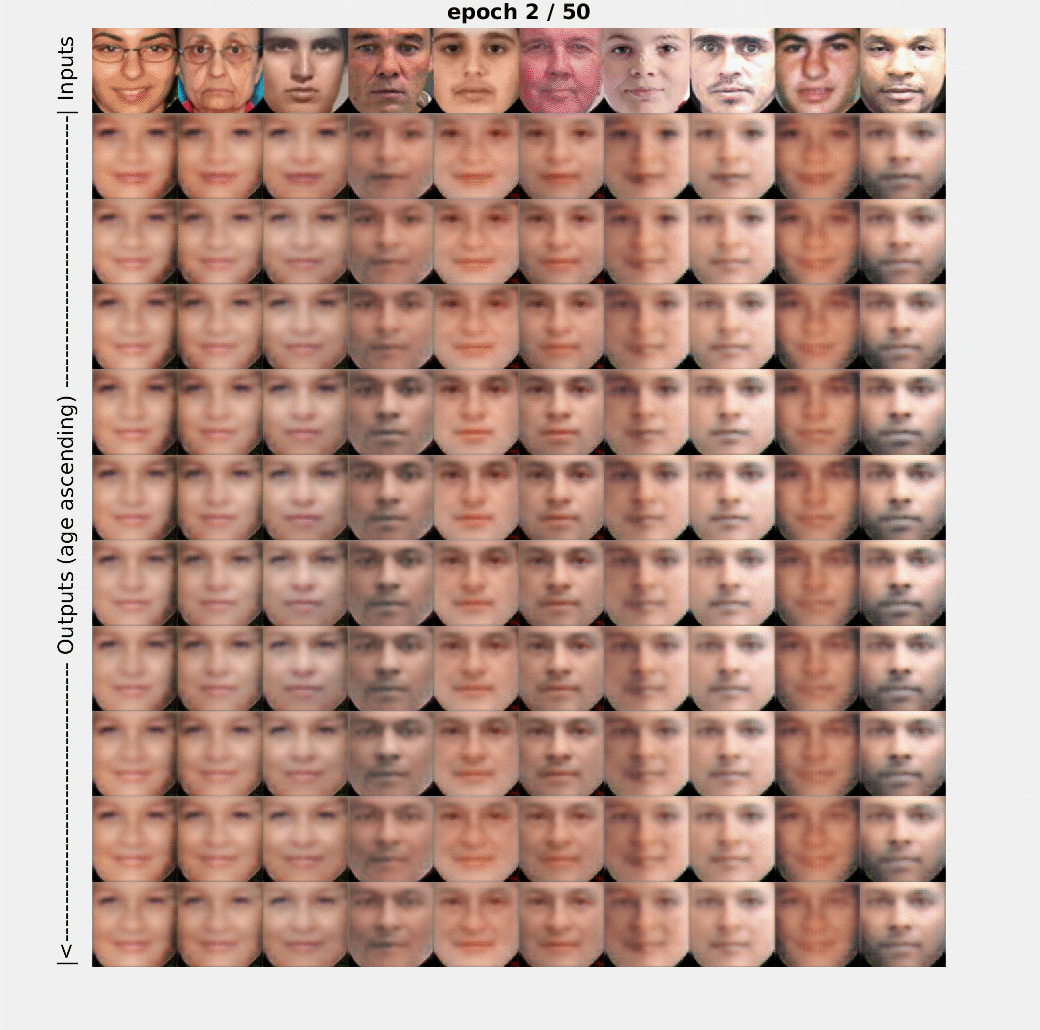Age Progression/Regression by Conditional Adversarial Autoencoder (CAAE)
TensorFlow implementation of the algorithm in the paper Age Progression/Regression by Conditional Adversarial Autoencoder.
Pre-requisites
- Python 2.7x
- Scipy
- TensorFlow (r0.12)
- Please note that you will get errors if running with TensorFlow r1.0 because the definition of input arguments of some functions have changed, e.g.,
tf.concatandtf.nn.sigmoid_cross_entropy_with_logits.
- Please note that you will get errors if running with TensorFlow r1.0 because the definition of input arguments of some functions have changed, e.g.,
Datasets
- FGNET
- MORPH
- CACD
- UTKFace (Access from the Github link or the Wiki link)
Prepare the training dataset
You may use any dataset with labels of age and gender. In this demo, we use the UTKFace dataset. It is better to use aligned and cropped faces. Please save and unzip UTKFace.tar.gz to the folder data.
Training
$ python main.py
The training process has been tested on NVIDIA TITAN X (12GB). The training time for 50 epochs on UTKFace (23,708 images in the size of 128x128x3) is about two and a half hours.
During training, a new folder named save will be created, including four sub-folders: summary, samples, test, and checkpoint.
samplessaves the reconstructed faces at each epoch.testsaves the testing results at each epoch (generated faces at different ages based on input faces).checkpointsaves the model.summarysaves the batch-wise losses and intermediate outputs. To visualize the summary,
$ cd save/summary
$ tensorboard --logdir .
After training, you can check the folders samples and test to visualize the reconstruction and testing performance, respectively. The following shows the reconstruction (left) and testing (right) results. The first row in the reconstruction results (left) are testing samples that yield the testing results (right) in the age ascending order from top to bottom.
The reconstruction loss vs. epoch is shown below, which was passed through a low-pass filter for visualization purpose. The original record is saved in folder summary.
Testing
$ python main.py --is_train False --testdir your_image_dir
Then, it is supposed to print out the following message.
Building graph ...
Testing Mode
Loading pre-trained model ...
SUCCESS ^_^
Done! Results are saved as save/test/test_as_xxx.png
Specifically, the testing faces will be processed twice, being considered as male and female, respectively. Therefore, the saved files are named test_as_male.png and test_as_female.png, respectively. To achieve better results, it is necessary to train on a large and diverse dataset.
A demo of training process
The first row shows the input faces of different ages, and the other rows show the improvement of the output faces at every other epoch. From top to bottom, the output faces are in the age ascending order.
Files
FaceAging.pyis a class that builds and initializes the model, and implements training and testing related stuffops.pyconsists of functions calledFaceAging.pyto implement options of convolution, deconvolution, fully connection, leaky ReLU, load and save images.main.pydemonstratesFaceAging.py.
Citation
Zhifei Zhang, Yang Song, and Hairong Qi. "Age Progression/Regression by Conditional Adversarial Autoencoder." IEEE Conference on Computer Vision and Pattern Recognition (CVPR), 2017.
@inproceedings{zhang2017age,
title={Age Progression/Regression by Conditional Adversarial Autoencoder},
author={Zhang, Zhifei and Song, Yang and Qi, Hairong},
booktitle={IEEE Conference on Computer Vision and Pattern Recognition (CVPR)},
year={2017}
}




